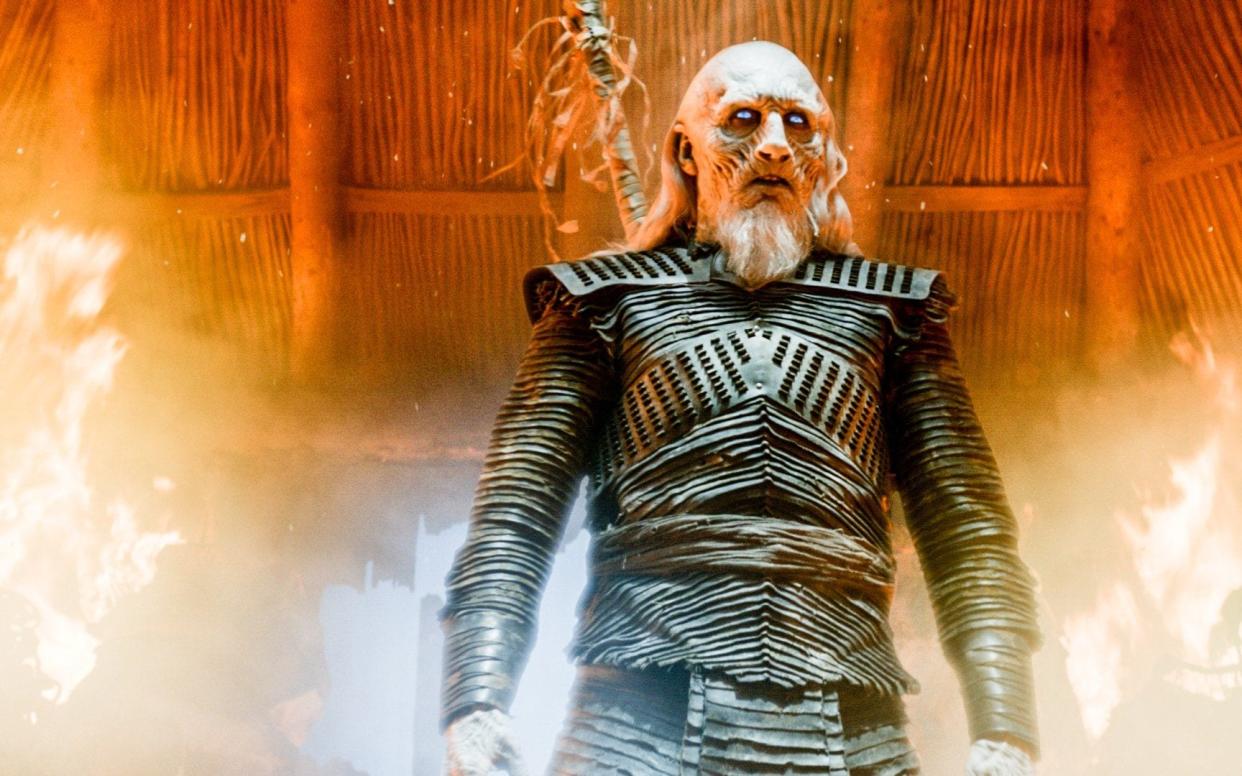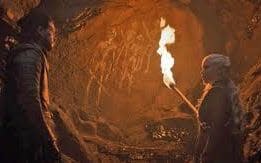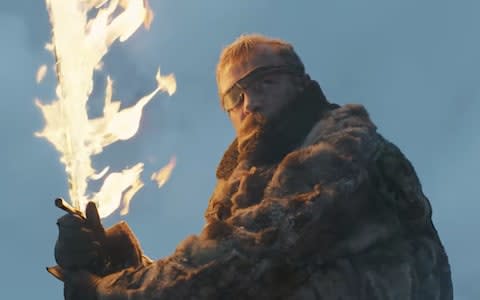Azor Ahai: who is the original Game of Thrones Prince that was Promised?

Even if you’re the most casual, easily confused Game of Thrones fan in existence, you’ve probably grasped the basic thrust of the show’s plot by now. Previously, lots of people were warring over who should sit on the Iron Throne of Westeros. Now, most of the contenders are dead - save for one or two - and a bigger, scarier problem has emerged.
The Wall has fallen and the deadly Night King is on the march with an army of White Walkers, wights and an undead, blue-fire-breathing dragon. Winter is here and season 8 is about to get crazy (even by Game of Thrones' standards).
According to legend, however, this isn’t the first time something like this has happened.
Both George RR Martin’s books and the HBO TV show have hinted at a time long before a frozen Viserion when the known world (Westeros, Essos and other lands) fell into a period called The Long Night. During this time, a prolonged wintry darkness fell and the Walkers and their wights laid waste to humanity.

“Thousands and thousands of years ago, a winter fell that was cold and hard and endless beyond all memory of man,” Old Nan (the oldest person at Winterfell) tells Bran in A Game of Thrones - the first in Martin’s series.
“There came a night that lasted a generation, and kings shivered and died in their castles even as the swineherds in their hovels. Women smothered their children rather than see them starve, and cried, and felt their tears freeze on their cheeks.”
But if we accept the version of events given in the show (which has overtaken the books by some extent), this time of darkness was preceded by a great war between humanity and the ancient race known as the Children of the Forest.

To defend themselves, the Children turned a human man into the Night King and planned to use him as a weapon against the human invaders (this, at least, is what they tell Bran Stark).
The “weapon” then grew out of control, creating his own army and turning on the Children and humans alike.
The Dragonstone cave paintings, found by Jon Snow in season seven, show how the Children were forced to join forces with humanity to fight the White Walkers in a conflict that later became known as the War for the Dawn.

Eventually, the enemy was driven back to the North and the great Wall was built, ostensibly, to protect Westeros from further attacks.
By the look of things, history will repeat itself for season eight of Game of Thrones.
Who is Azor Ahai?
In Game of Thrones' fictional world some people believe that a legendary hero, named in some cultures as Azor Ahai, was responsible for defeating the Walkers.
Followers of the Red God R’hllor, such as Melisandre, even claim that the hero will be reborn as the “Prince That Was Promised” to take on the new darkness.
In the show it seems that the two titles can be used interchangeably and most likely refer to the same person, with Melisandre believing that the “Prince” will be a direct reincarnation of Ahai.

Additional details about the prophecy, from both the books and show, claim that the Prince must “be born again amidst smoke and salt to wake dragons out of stone”, will come “when the red star bleeds and the darkness gathers”, and will wield a flaming sword called Lightbringer.
It was also prophesied that he would be born into the Targaryen line as a descendant or relation of Aerys II (the Mad King).
Initially, Melisandre believed that Stannis Baratheon, whose grandmother was a Targaryen, was the legendary man in question. Later, after Stannis died and his daughter Shireen burned alive, she admitted she had been mistaken.
Now, however, the priestess seems pretty certain that Jon fits the heroic bill.
That said, we were reminded early in season seven that there’s no reason why the prophesied saviour should be male: technically speaking, the language of the prophecy refers to “The Prince or Princess That was Promised”.
Daenerys – a woman who stepped from a burning pyre after hatching three stone dragon eggs as a red comet (a “bleeding star”) appeared in the skies – could therefore be a strong contender for the Azor Ahai appointment.

There is also compelling evidence in Jon’s favour. Some fans even believe that the “bleeding star” could refer to the bloodied sword of Ser Arthur Dayne, one of the men guarding Lyanna before she gave birth at the Tower of Joy.
In both the books and the TV show it is established that Dayne’s sword is made from metal from a fallen star.
Furthermore, a Reddit-user pointed out that, in the season six finale, the cameras briefly linger on the sword, which Eddard Stark brings to Lyanna’s bed.
It is also worth noting that Jon has, quite literally, been reborn and that the show has hinted several times that he was brought back to be part of something bigger than himself.
What about Nissa Nissa?
In the original Azor Ahai legend, the hero tries to forge his victorious Lightbringer blade three times but fails to temper (cool and harden) it twice, causing the metal to shatter.
On his first go he opts for the tried and tested method of tempering the sword with water, only to see it break. Second-time round he decides to plunge it into the heart of a lion (naturally), but remains bladeless.
Finally, he realises that there is only one option and tempers his third attempt by driving it into the heart of his beloved wife, Nissa Nissa. Her sacrifice, which fuses her soul with the sword, not only what forms the blade but empowers it to defeat the Walkers.

While the events above are unlikely to be recreated, they could have a symbolic application to the show.
Could Daenerys, for example, fall into the Nissa Nissa role and sacrifice herself so that Jon will be able to defeat the Walkers? Could the lion refer to a sacrificial fate for Tyrion, Jaime or Cersei? Could super-blacksmith Gendry simply whip up half a dozen Lightbringers, all tempered to perfection, preventing anyone from having to die at all?
However season eight pans out, it’s worth noting that the show has yet to address Nissa Nissa at all. Her part is likely either absent in the adaptation or the showrunners have deliberately held it back.

Seasons 1 - 8 are available to watch on NOW TV (with a 7 day free trial)

 Yahoo Movies
Yahoo Movies 
